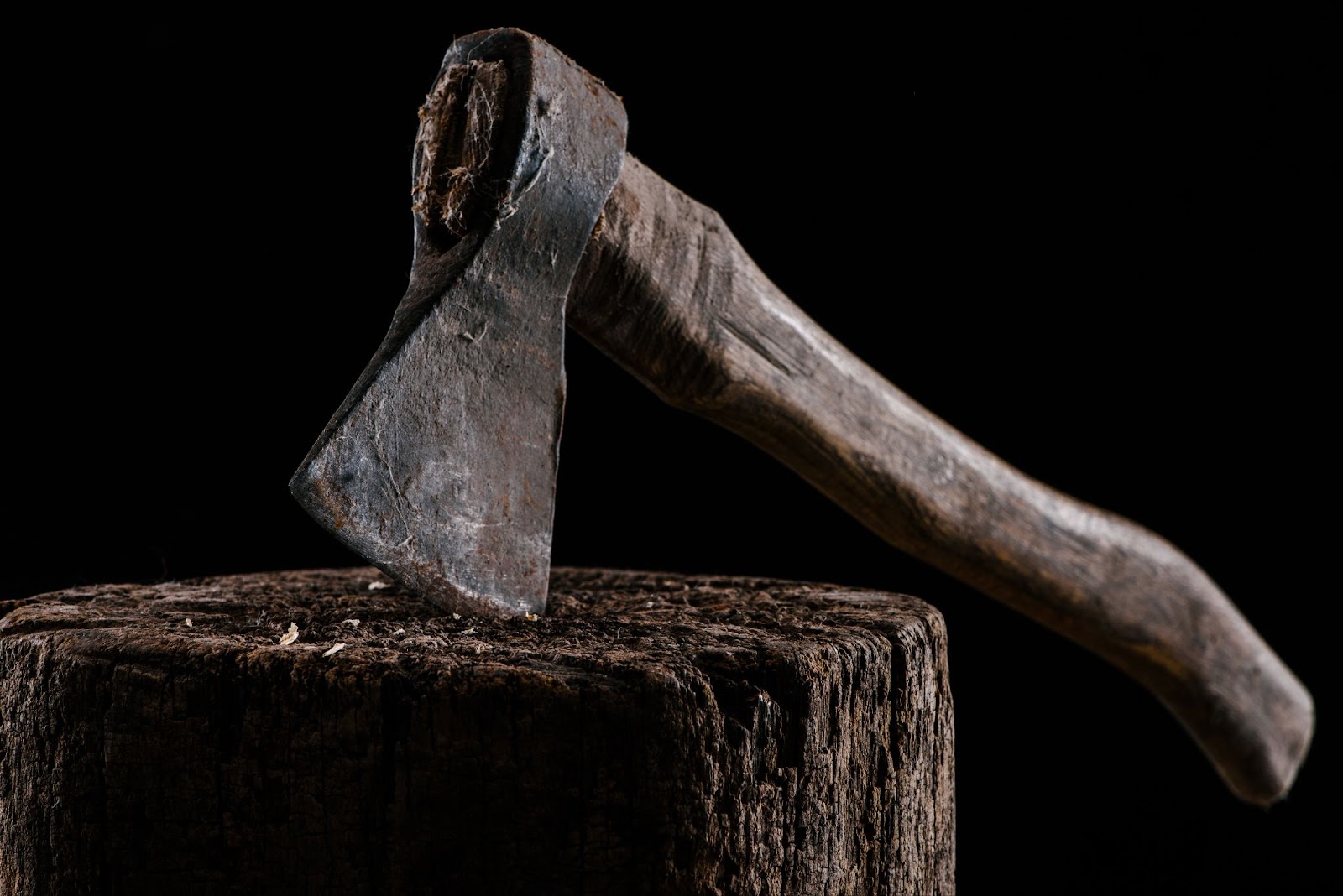The Physics of Axe-Throwing: An Analytical Deep Dive
Axe-throwing, once a primal skill for survival, has evolved into a recreational sport that combines precision, power, and finesse. Up to this date, axe-throwing has continued to surge in popularity in recent years, captivating thrill-seekers and enthusiasts with its blend of skill, precision, and adrenaline. But beneath the surface of this seemingly straightforward activity lies a fascinating world of physics.

Exploring the Physics of Axe-Throwing
Axe-throwing combines skill and competition, showcasing the intricacies of projectile motion. From the release to the satisfying thud of impact, a complex interplay of forces governs every throw. Factors like release angle and rotational speed significantly affect accuracy, requiring a balance of technique and understanding of physics. Mastery of these principles enhances performance and appreciation for enthusiasts at all levels, elevating the experience of this exhilarating activity.
In axe-throwing, the release angle and rotational speed are crucial for accuracy. Calculating the ideal trajectory based on distance and axe weight, and adjusting technique accordingly, maximizes efficiency. Proper spin stabilizes the axe mid-flight, ensuring precision and control. Understanding these physics allows enthusiasts to refine their skills and deepen their enjoyment of the sport, whether competing or casually throwing.
Mastering the Physics of Axe-Throwing
To get the hang of axe-throwing, you need to have a thorough knowledge of these fundamental bodily functions and consistent practice. By honing their technique and fine-tuning their mechanics, throwers can develop a heightened sense of kinesthetic awareness, enabling them to adjust their throws for optimal results intuitively.
Practice includes trial and error, which means it involves experimentation and analysis, which play crucial roles in the journey towards mastery. By carefully observing the trajectory of each throw and identifying patterns in their performance, throwers can identify areas for improvement and refine their technique accordingly. Through perseverance and a willingness to learn from both successes and failures, aspiring axe-throwers can unlock their full potential on the throwing range.
How to Enhance Your Axe-Throwing Skills by Understanding Physics

Enthusiasts of the thrilling sport of axe-throwing often find themselves captivated by the sheer adrenaline rush and the satisfaction of landing a perfect throw. However, beyond mere intuition and practice lies a deeper understanding of the physics that governs this ancient art.
Learn how a basic understanding of physics can transform your axe throwing from a beginner to a pro.
Understanding Center of Mass
Those aiming to improve their axe-throwing skills must understand the concept of “center of mass.” The center of mass is where all of an object’s mass is concentrated. When throwing an axe, you want to ensure that its center of mass aligns with the trajectory you intend to follow. By appropriately positioning the axe’s center of mass, you can achieve greater stability and accuracy in your throws.
Leveraging Angular Momentum
The way your axe spins through the air is primarily determined by its angular momentum. Throwing the axe with a controlled spin can improve stability and keep it flying on a more predictable path. Understanding how angular momentum influences the rotation of the axe allows you to fine-tune your throws for optimal results.
Harnessing Kinetic Energy
Kinetic energy is transferred from your body to your axe during the throw. This energy pushes the axe forward with force. Once you learn how to effectively transfer kinetic energy from your own body to your axe, you’ll be able to increase the speed of your throws and get more penetration into your target. This requires precise coordination of your movements and a keen awareness of the energy dynamics involved in the throwing motion.
Adjusting for Air Resistance
Air drag is a form of resistance that the axe faces when flying through the air, and it can change its path and slow down. Thus, understanding how air resistance impacts the axe’s flight allows you to fine-tune your throwing style better to match these outside forces. You need patience as this sport requires experimenting with different angles and velocities. Hence, you find the optimal balance between speed and accuracy, allowing you to overcome the challenges posed by air resistance.
Whether you’re just starting out or you’ve been throwing for a few years and want to improve your game, incorporating these principles into your practice will help you achieve new levels of accuracy and consistency.
How Does Physics Influence Axe-Throwing Accuracy?
While seemingly simple in concept, axe-throwing is a sport that intricately involves physics principles. From the moment the axe leaves your hand to its impact on the target, various factors come into play, significantly influencing accuracy and success. Like many other sports, it is governed by the fundamental principles of physics. Understanding how these principles influence the trajectory and accuracy of an axe throw is crucial for mastering the sport.
Here’s a closer look at the key ways in which physics impacts axe-throwing accuracy:
Force and Velocity
The force applied to the axe during the throw determines its velocity as it travels towards the target. According to Newton’s second law of motion, force equals mass multiplied by acceleration. Therefore, applying a consistent and appropriate force is essential for achieving the desired velocity and distance.
Angle of Release
The angle at which it is released greatly influences the axe’s trajectory. The optimal angle of release varies depending on the distance to the target and the desired trajectory. With that, axe-throwers can optimize accuracy and reduce path deviations by adjusting their release angle based on their understanding of projectile motion principles.
Rotation and Spin
The axe’s rotation as it travels through the air plays a crucial role in stabilizing its flight and influencing its accuracy. The axe is assisted in maintaining a constant orientation and withstanding destabilizing forces like wind and air resistance by a phenomenon known as gyroscopic stability, which is controlled by angular momentum. Properly managing the axe’s spin through wrist movement ensures a stable and accurate flight path.
Aerodynamics
The shape and design of the axe, as well as its surface texture, impact its aerodynamic properties and, consequently, its accuracy. Smooth, streamlined axes experience less air resistance and turbulence, allowing smoother, more predictable trajectories. The weight distribution along the axe’s length also affects its stability and flight characteristics.
Gravity and Arc
Gravity exerts a downward force on the axe when it leaves the thrower’s hand. Throwers can modify their aim and release angle to counteract the downward pull by better understanding how gravity affects the axe’s trajectory. The resulting arc of the axe’s flight path follows a predictable trajectory, with the apex of the arc occurring at the midpoint before descending towards the target.
Overall, physics plays a fundamental role in determining the accuracy of axe-throwing. By leveraging principles such as force and velocity, projectile motion, rotation and spin, aerodynamics, and gravity, axe-throwers can refine their technique and consistently hit their targets precisely and confidently. A deeper understanding of these principles enhances the enjoyment and mastery of the sport, making axe-throwing a physical and intellectually engaging pursuit.
Why Is Understanding Physics Important in Axe-Throwing?
Understanding physics in axe-throwing is essential as it provides insights into the principles governing the trajectory and accuracy of the axe. When throwers grasp these concepts, they can improve their technique, adjust to changing conditions, and avoid injuries, which enhances their performance and overall enjoyment of the sport.
Achieving Accuracy
Physics principles govern the trajectory of the axe once it leaves the thrower’s hand. Understanding concepts such as force, velocity, and projectile motion helps axe-throwers adjust their technique to achieve greater accuracy and consistency in hitting their target.
Optimizing Technique
Knowledge of physics allows axe-throwers to optimize their throwing technique for maximum efficiency and effectiveness. Throwers can enhance their performance by precisely adjusting the axe’s flight path and knowing how aerodynamics, rotation, and release angle affect it.
Minimizing Energy Loss
Physics principles also help axe-throwers minimize energy loss during the throwing process. By applying force in a controlled and efficient manner, throwers can ensure that the maximum amount of energy is transferred to the axe, resulting in a more robust and accurate throw.
Adapting to Environmental Factors
Environmental factors such as wind speed and direction can significantly impact the axe’s trajectory. Understanding how these factors interact with the axe’s flight path allows throwers to make real-time adjustments to compensate for changing conditions and maintain accuracy.
Preventing Injury
A solid understanding of physics can also help prevent injuries during axe-throwing. By applying proper technique and understanding the forces involved in the throwing motion, throwers can minimize the risk of strain or injury to their muscles and joints.
Enhancing Enjoyment
Lastly, understanding the physics behind axe-throwing adds a layer of intellectual engagement to the sport, enhancing the enjoyment and satisfaction of mastering the skill. By studying the science underlying their throws, axe-throwers can better understand the sport and improve their technique over time.
Understanding physics is essential in axe-throwing for achieving accuracy, optimizing technique, minimizing energy loss, adapting to environmental factors, preventing injury, and enhancing enjoyment. By incorporating physics principles into their throws, axe-throwers can improve their performance and gain a deeper understanding of this dynamic and thrilling sport.
The Science Behind Axe-Throwing
The art of axe-throwing is as much a science as a sport. By delving into the physics behind its mechanics, axe-throwing enthusiasts gain a deeper appreciation for the skill and precision required to excel in this ancient practice. Whether you are a seasoned thrower or just beginning your journey, understanding the underlying principles of projectile motion, spin dynamics, and trajectory optimization can elevate your performance and enrich your experience on the throwing range.
Are you curious about throwing an axe-throwing party? Check out our Propel Axe blog to learn more about our exciting events and services for players of all ages.


 720-330-9755
720-330-9755
